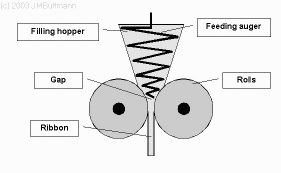- Home
- Blog
- News
- Basics
- Sources
- Agencies, Regulatory & Organisations
- CERSI Excipients Browser
- Excipient Report
- Excipient DMF List
- EXCiPACT Certified Companies
- Excipient Documentation
- Excipient EINECS Numbers
- Excipient E-Numbers
- FDA Inactive Ingredient List
- FDA GRAS Substances (SCOGS) Database
- IPEC Americas
- USP - U.S. Pharmacopeia
- Definitions
- Whitepapers / Publications
- Supplier
- Services
- Media
- Events
- 1st pharmaexcipients Poster Award
- Event Calendar
- Events featured by pharma-excipients
- 4th Annual Formulation & Drug Delivery Congress
- DDF Summit
- ExcipientFest Americas
- ExcipientFest Asia
- Global CompliancePanel
- International Conference and Exhibition on Pharmaceutics & Novel Drug Delivery Systems
- Formulation & Drug Delivery USA Congress
- Laboratory Medicine 2018
- Making Pharmaceuticals Europe
- Making Pharmaceuticals Exhibition
- Pharma Integrates
- PharmaExcipients China @CPhI China
- TTC Technology Training Center
- Jobs
- Online Sourcing
- Contact
30. April 2018
Metformin has a poor tabletability and flowability. Therefore, metformin is typically wet granulated with a binder before tableting. To save production costs, it would be desirable to implement a roll compaction/dry granulation (RCDG) process for metformin instead of using wet granulation. In order to implement RCDG, the efficiency of dry binders is crucial to ensure a high drug load and suitable properties of dry granules and tablets. This study evaluates dry granules manufactured by RCDG and...
01. November 2017
Gums from Enterolobium cyclocarpum and Cedrela odorata trees were evaluated in formulating bioadhesive microspheres containing metformin hydrochloride, for sustained drug release. Hydroxylpropyl- methyl cellulose (HPMC) was the standard.
03. September 2017
Abstract Salt formation has been intensively used to improve drug properties, including solubility, stability and mechanical properties. A sweet salt of metformin with acesulfame, prepared though an anion exchange reaction, showed superior properties over the commercial hydrochloride salt. These included both remarkable improvement of taste and significant enhancement in tabletability, which is explained by the different crystal structures and lower hardness as measured by nanoindentation. The...
17. July 2017
This study focuses on evaluating the potential of transferring from a batch process to continuous process for manufacturing of the extended release formulation. Metformin hydrochloride (HCl) was used in the model formulation which was intended to contain the high amount of hydrophilic drug.
06. January 2017
ABSTRACT Metformin hydrochloride is generally used to regulate blood glucose level; It is mainly used for Insulin- dependent mellitus or Type II diabetes. Type II diabetes mellitus acts by decreasing hepatic glucose output and peripheral insulin resistance. Metformin hydrochloride is a very popular high dose pharmaceutical active. It is normally made by wet granulation method. Wet granulation is more time and man power consuming method. The overall objective of the present work was to develop...
28. December 2016
Introduction: Diabetes mellitus (DM) is a worldwide disease with high mortality rate. Metformin hydrochloride has been used as the first-line drug for the treatment of DM Type 2. However, the high water solubility and short half-life lessen the potential effectiveness of using conventional metformin tablet. Floating tablet is an attractive pharmaceutical formula which can make the drugs staying with an adequate time in the absorption part of the gastrointestinal tract (i.e., the stomach), and...
03. May 2016
Taste-masked properties of micropellets based on hard fat and/or solid lipid mixtures (prepared by solvent-free cold extrusion/spheronization), containing metformin hydrochloride were investigated. An in-line and an on-line drug release profile evaluation of the pellets was performed and further correlated with an electronic tongue investigation. The pellets based on more than 30% of lipid binders showed metformin HCl releases below 10% after 30 s of dissolution. Micropellets based on 20 and...
05. March 2016
The aim of this study was to investigate the combined influence of two independent variables in the preparation of sustained release metformin hydrochloride (MH) nanoparticles by 32 factorial design using a spray drying method. Polymer concentration and amount of organic solvent are selected as independent variables while drug loading and drug release were considered as dependent variables. The nanoparticles were characterized using particle size analyzer which is obtained in the range of...
29. February 2016
The purpose of the present investigation was the preparation and evaluation of gastro-retentive floating drug delivery system for anti-diabetic drug metformin hydrochloride that would retain the drug in stomach and continuously release the drug in controlled manner up to a predetermined time leading to improve bioavailability. The microspheres were prepared by oil-in-oil emulsion solvent evaporation technique using ethyl cellulose, methacrylic acid copolymer (Eudragit RS100, Eudragit RSPO and...
05. December 2015
During the development of a wet granulated 850 mg metformin hydrochloride tablet formulation, the tablets exhibited high friability (>3% w/w) irrespective of the source of extra-granular magnesium stearate (MgSt). High friability values indicated that an anti-bonding effect of MgSt was too high to be overcome by 3.3% w/w povidone as a binder in the formulation with 1.5% w/w residual granule moisture. More





